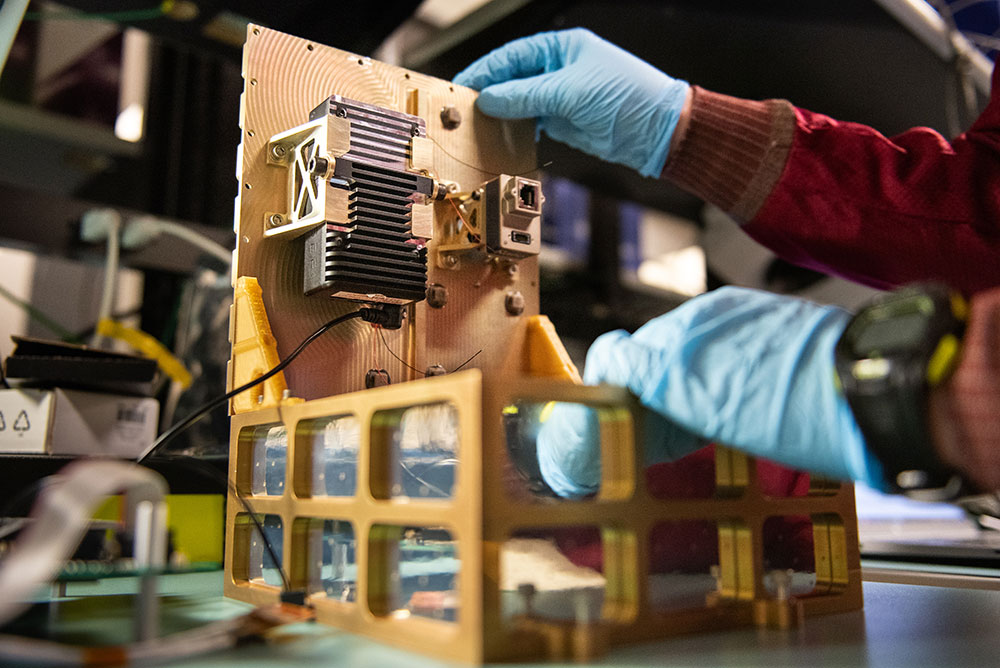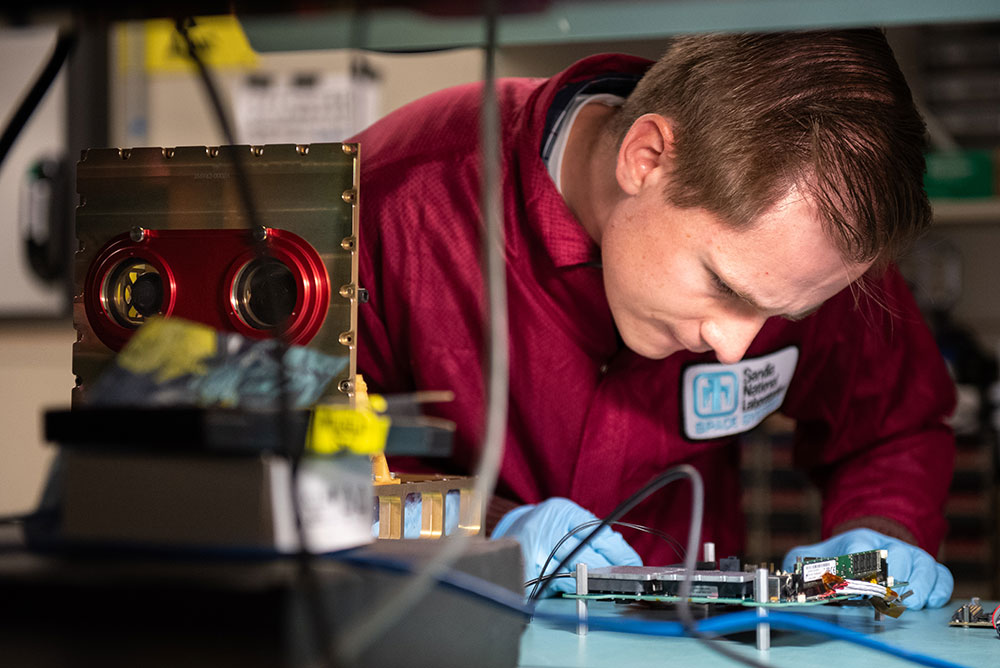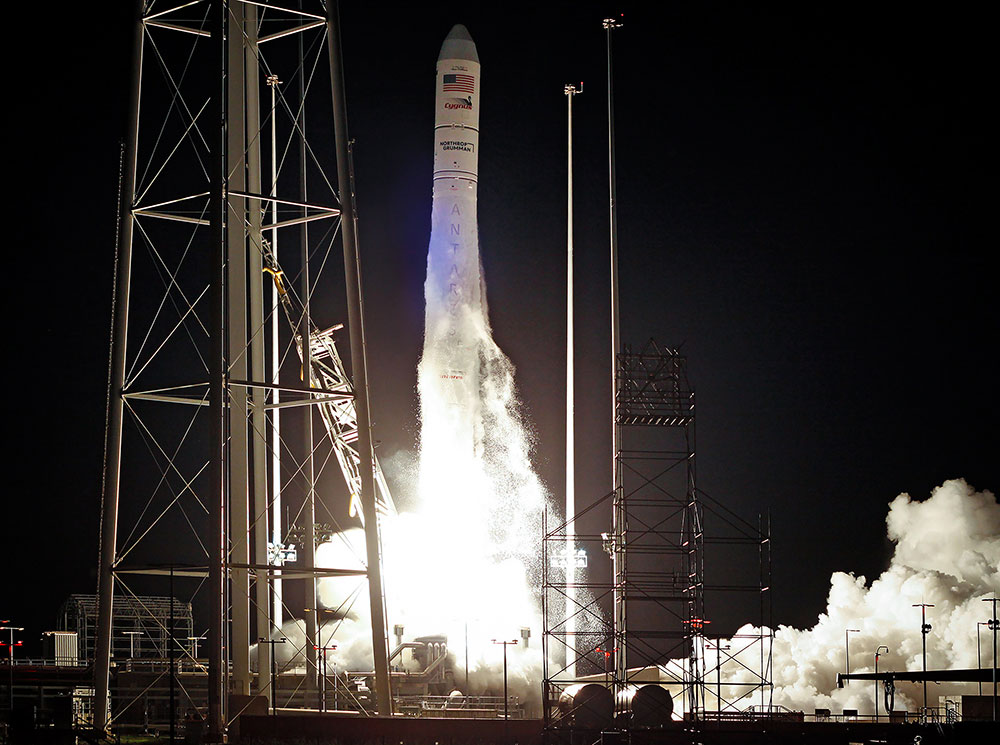An experiment on International Space Station readies path to quickly mature technology for satellites

Industry can develop new computer chips and other potential satellite payload components more quickly than national labs and other government agencies can design, develop, test and qualify them for satellites that must meet strict security and space-readiness standards. This can create a lag in using the latest technology for national security space systems.
A Sandia team is working to change that by creating an iterative process that uses the International Space Station as a proving ground to rapidly test and mature technology in space.
In collaboration with NNSA, NASA and commercial space company NanoRacks, Sandia began its first demonstration this month when astronauts used the Canadian robotic arm to install Sandia’s payload that will test high-performance computing technology on the NanoRacks External Platform, hosted on the International Space Station’s Japanese External Module.
The payload, named LEONIDAS, will operate in orbit for about 10 weeks before returning to Sandia for additional evaluation. It also may be the first payload to fly an Advanced Micro Devices Versal in space, said James Meub, manager and one of the project’s engineering leads. The Versal is a commercial computer chip that offers advanced processing capabilities and may better withstand the naturally occurring radiation found in space without using traditional radiation-hardened electronics.

“Because of their critical missions, national security satellites always need to work as expected,” James said. “Typically, this means we use components that we trust because they have already performed well in space or have undergone a lengthy screening and testing process that simulates the space environment. Instead of focusing on perfecting the system on the ground and in the lab, the team will get performance data and experience integrating the technology with payload designs faster than before.”
James said the data generated from each payload hosted on the space station will help inform and improve the next system’s design and ultimately enable the team to be more responsive to national security threats and opportunities.
Injecting new technology into long-term missions
Since 1963, Sandia has been developing satellite payloads to detect nuclear detonations. The Global Burst Detector, for example, looks for nuclear detonations around the world, offering real-time information to U.S. policymakers.
A high-rigor satellite like the Global Burst Detector can take a decade or more to go from concept to launch, manager John Dickinson said. For each new version of the Global Burst Detector, each part is tested individually and as a system, undergoing various surrogates for the space environment, including vibration, thermal vacuum and radiation testing.
“While this produces highly reliable payloads, it doesn’t easily or quickly incorporate the latest technology,” John said. “With this new approach, we can test new technology in space within 12 to 18 months, which will enable us to consider it for the next GBD and other payloads on a faster timeline.”
Second payload matures novel research for space-readiness
Beyond testing new commercial technology like the Versal, Sandia also will be able to mature the new, fundamental research produced through its Laboratory Directed Research and Development projects.
Scheduled to launch after LEONIDAS, the upcoming payload named ASTRID will test four different technologies initially developed under Sandia’s Science and Technology Advancing Resilience for Contested Space mission campaign. The campaign aims to develop new solutions for autonomously protecting satellites against threats.

The new technologies include:
- A vanadium dioxide paint, developed by physicist Erika Vreeland, that changes its optical properties to act as a heat window as temperature increases, to passively regulate a satellite’s temperature and help defend it against directed-energy weapons.
- Protection against electromagnetic pulses, developed by optical engineer Charles Reinke, by surrounding a satellite’s computer with a sealed metal box and then using piezolectrics — rapidly vibrating small actuators — to pass data and provide acoustic power, allowing a satellite to reboot and continue its mission after an electromagnetic pulse.
- Integrity box, led by cybersecurity researcher Sean Crosby, which applies time and location information and a tamper-proof digital signature to satellite-captured imagery, ensuring data authenticity.
- Radiation-hardened neural networks, led by manager Josh Donckels and electrical engineer Gary Simon, that have been trained on data altered by radiation, allowing the team to compare its performance against traditional neural networks trained on pristine data.
The NNSA Office of Space-Based Nuclear Detonation Detection funded LEONIDAS, while the initial research for ASTRID was funded by Sandia’s Laboratory Directed Research and Development program.
EDITORʼS NOTE: James Meub is the husband of writer Kristen Meub.